The Sega Dreamcast was a landmark video game console that was released in 1998 and marked a new era in gaming. With its powerful hardware, innovative features, and library of high-quality games, the Dreamcast quickly became a popular choice among gamers. Here is a Great Review to Read to back those claims up. Despite its relatively short lifespan, the Dreamcast had a lasting impact on the gaming industry and is still remembered as one of the greatest video game consoles of all time. This article will take a look at some of the most successful and critically acclaimed games that Sega released for the Dreamcast. These games showcase the Dreamcast’s innovative technology, diverse range of genres, and commitment to delivering high-quality gaming experiences. Whether you’re a fan of fast-paced action games, deep RPGs, or engaging sports simulations, the Dreamcast has something to offer for everyone.
Sonic Adventure: An Action-Packed Classic
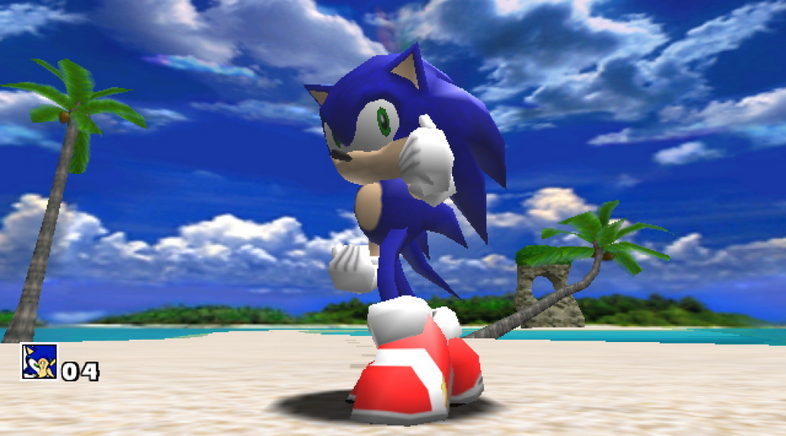
Arguably one of the most iconic Sega Dreamcast games, Sonic Adventure was a game-changer. It marked Sonic’s first foray into a fully 3D environment and set the stage for many future installments in the franchise. The game opens with our blue hero rushing through the streets of Station Square, an expansive 3D city filled with skyscrapers, parks, and, of course, rings to collect.
Sonic Adventure went above and beyond to deliver a diverse gameplay experience. With six playable characters, including Sonic, Tails, Knuckles, Amy Rose, Big the Cat, and E-102 Gamma, each had their own unique abilities and storylines. From Sonic’s high-speed action to Big’s leisurely fishing trips, each character offered a different perspective on the game’s overarching story.
The game is also famous with its innovative features. Remember the Chao Garden? The virtual pet system allowed players to raise, breed, and even race adorable creatures known as Chaos. It was a charming and relaxing diversion from the main action.
One of the game’s biggest triumphs was its epic boss battles. The showdowns with Dr. Robotnik and Chaos, the shape-shifting water creature, were unforgettable and thrilling. Sonic Adventure was more than a game; it was an adventure that resonated with gamers of all ages and cemented its place as one of the best Dreamcast games of all time.
Crazy Taxi

“Crazy Taxi! Are ya ready? Here we go!” If those words don’t bring a wave of nostalgia, I don’t know what will. This arcade classic, one of the most iconic Sega Dreamcast games, was pure chaotic fun. It’s the game that made recklessly driving a taxi around a city not just fun, but a whole vibe.
In Crazy Taxi, time was money. Players had to pick up passengers and get them to their destinations as fast as possible. The faster you got there, the more money you made. But here’s the catch: traffic laws did not exist. Players were encouraged to drive as crazily as possible, earning extra money for daredevil stunts like near-misses and massive jumps.
The game’s setting was a sun-soaked city inspired by San Francisco, with hilly streets, bustling traffic, and even an underwater tunnel. It was vibrant, full of life, and packed with secrets and shortcuts that made exploring the city a joy.
One of the things that truly set Crazy Taxi apart was its soundtrack. With tunes from The Offspring and Bad Religion blaring in the background, it added an extra layer of excitement and energy to the already adrenaline-fueled gameplay. The music was so integral to the game that it’s almost impossible to separate the two.
To sum it up, Crazy Taxi was more than just a driving game. It was a high-speed, punk rock, white-knuckle thrill ride that perfectly encapsulated the wild and rebellious spirit of the Sega Dreamcast Era.
SoulCalibur: A Fighting Game Masterpiece

When it comes to fighting games, few can match the depth, fluidity, and beauty of SoulCalibur, a gem among Sega Dreamcast games. A tale of souls and swords, this game transcended its arcade roots to become one of the most beloved titles of the Sega Dreamcast Era.
One of SoulCalibur’s defining features was its roster of fighters. Each character came with their unique weapons, from Siegfried’s colossal sword to Voldo’s katars. Characters like the noble samurai Mitsurugi, the cursed pirate Cervantes, and the possessed knight Nightmare became iconic figures in the gaming world.
The gameplay was a blend of strategy and action. The eight-way run system allowed for more significant movement and strategy, letting players sidestep and circle their opponents, looking for an opening to strike. The result was a game that was not just about button-mashing but required thought, timing, and precision.
However, the real star of SoulCalibur was arguably its graphics. At a time when 3D graphics were still finding their feet, SoulCalibur showcased what was possible. The detailed character models, the fluid animations, and the atmospheric stages were stunningly beautiful and set new standards for visual fidelity in video games.
Finally, the game’s story mode, “Mission Battle,” added a new layer to the fighting game formula. Players were given a map with different locations, each with unique battles and challenges, giving the game an RPG-like flavor.
Phantasy Star Online
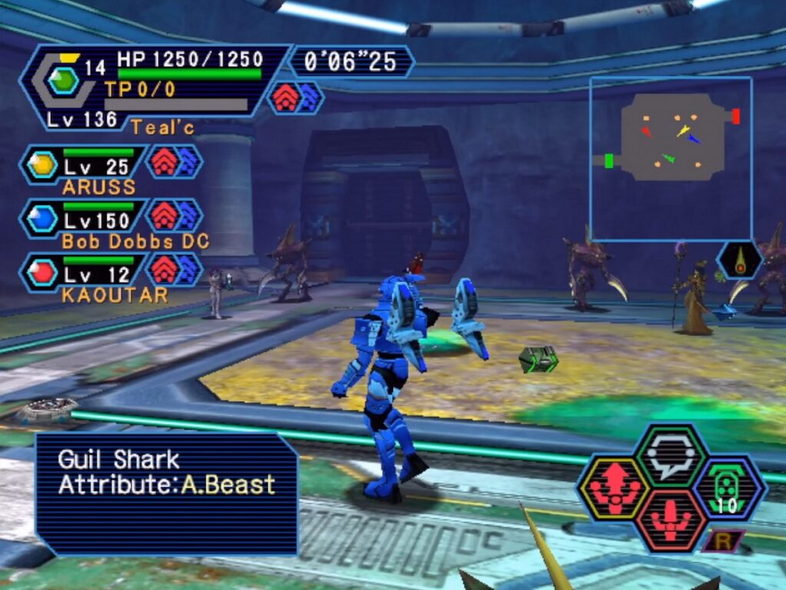
Ah, Phantasy Star Online! This game was a trailblazer in the Sega Dreamcast Era. The first-ever console MMORPG, it brought together players worldwide, allowing them to team up and explore its futuristic universe. It was an ambitious leap into the uncharted territory of online gaming, and it paid off beautifully.
The magic of Phantasy Star Online was in its simplicity. The game was straightforward to pick up and play, yet it offered depth and complexity for those who sought it. You could choose your character from a range of classes, each with its unique skills and abilities. From the gun-toting Rangers to the melee-focused Hunters and the magic-wielding Forces, there was a play style for everyone.
The game’s real-time combat system was another highlight. Unlike many RPGs of the time, Phantasy Star Online ditched turn-based battles for a more dynamic and engaging combat system. This shift made battles feel more visceral and intense, keeping players on their toes.
A significant part of the Phantasy Star Online experience was its cooperative multiplayer. Players could form a party of up to four characters and embark on missions together. The game’s cooperative elements, from teaming up to take down tough enemies to helping each other out with healing items and buffs, were a big part of its appeal.
Beyond the gameplay, Phantasy Star Online was also renowned for its distinctive art style. The game’s colorful, futuristic environments were a joy to explore, and its creature designs were imaginative and memorable.
In the pantheon of Sega Dreamcast games, Phantasy Star Online holds a special place. It was a bold experiment that succeeded in bringing the MMORPG experience to consoles, paving the way for future games in the genre.
Jet Set Radio
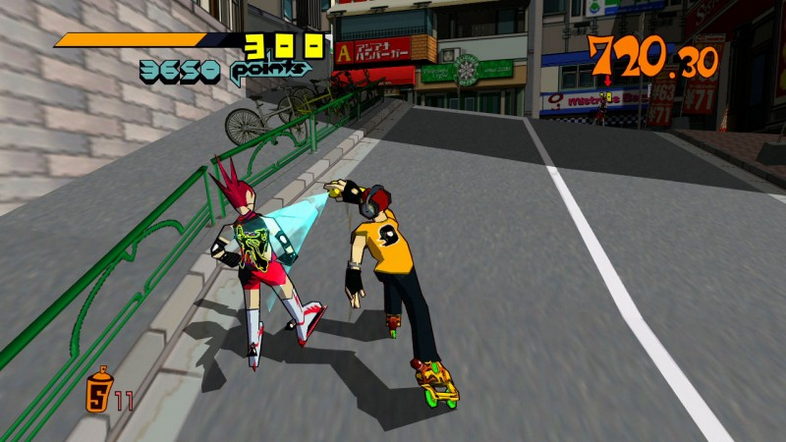
Let’s roller-skate our way into Jet Set Radio, one of the best Dreamcast games that truly embodied the spirit of the Sega Dreamcast era. As funky as it was revolutionary, this game left its graffiti tag on the hearts of many players.
Jet Set Radio had you stepping into the skates of a member of the GGs, a gang of roller-skating graffiti artists. Your mission? Tag the city of Tokyo-to with your graffiti while avoiding the authorities and rival gangs. It was a wild, high-energy ride filled with color, music, and style.
The gameplay was a unique blend of skating, platforming, and graffiti tagging. You’d zip around the city, grinding on rails and pulling off tricks, all while looking for the perfect spot to lay down your tag. And when you found it, you’d have to spray your graffiti quickly before the cops showed up.
What set Jet Set Radio apart was its cel-shaded graphics, a style rarely seen at the time. This unique art direction gave the game a vibrant, cartoon-like look that perfectly matched its upbeat, rebellious spirit. It was like playing a living, breathing comic book.
Then there was the music. Oh, the music! The game’s soundtrack, a mix of hip-hop, funk, and electronic music, was as much a character as the roller-skating graffiti artists themselves. It added a layer of energy and attitude to the game that made it truly unforgettable.
Jet Set Radio was a game that dared to be different, and it paid off. Its unique blend of gameplay, graphics, and music made it a standout title in the Sega Dreamcast’s library, and it remains a beloved classic to this day.
Tony Hawk’s Pro Skater 2
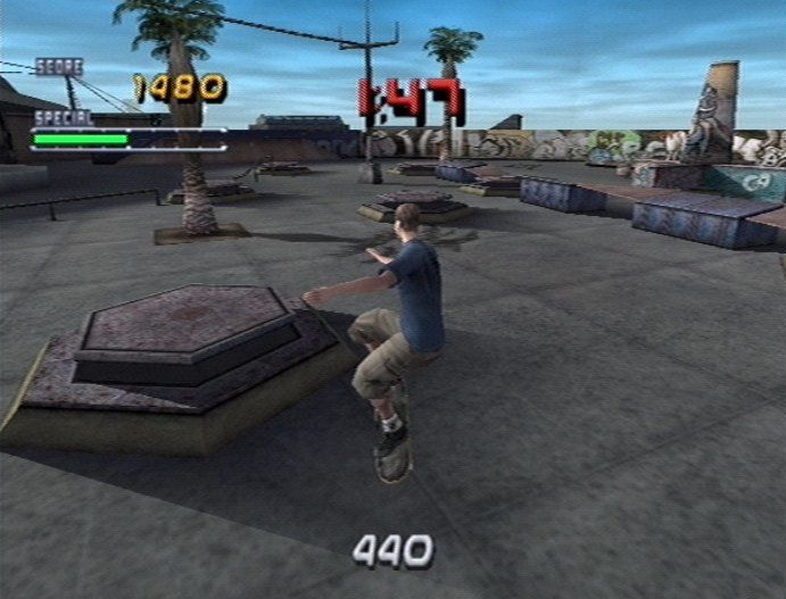
Now, let’s ollie into another unforgettable gem from the Sega Dreamcast era – Tony Hawk’s Pro Skater 2. This game took the skateboarding genre to new heights and is still widely regarded as one of the best skateboarding games ever made.
Tony Hawk’s Pro Skater 2 was more than just a sequel, it was a step up in every way. It added a slew of new features, including the ability to create your own skater and skate park. You could customize your character, deck them out in your choice of gear, and even design your own skating paradise. For many fans, these features were game-changers.
The gameplay was exhilarating. You’d skate through varied environments, performing tricks and racking up points. The controls were tight and responsive, making it feel like you were truly in control of every ollie, kickflip, and grind.
One of the things that made Tony Hawk’s Pro Skater 2 so special was its sense of freedom. You weren’t bound by any rules or objectives. You could simply skate around, exploring the level and pulling off tricks at your own pace. This sense of freedom, combined with the game’s addictive gameplay, made it hard to put down.
Of course, we can’t talk about Tony Hawk’s Pro Skater 2 without mentioning its soundtrack. Just like Jet Set Radio, music played a big role in the game. Its eclectic mix of punk, hip hop, and ska perfectly encapsulated the culture of skateboarding and made the game that much more immersive.
In short, Tony Hawk’s Pro Skater 2 was the epitome of cool. It captured the thrill and culture of skateboarding in a way few games have managed to do. Whether you were a seasoned skater or just a fan of good games, Tony Hawk’s Pro Skater 2 was a must-play during the Sega Dreamcast era.
Grandia II

Get ready to embark on a magical journey as we delve into Grandia II, another remarkable title from the Sega Dreamcast era. This RPG game won over fans with its engaging story, innovative combat system, and stunning visuals.
Set in a world where the battle between good and evil has left a significant mark, Grandia II follows the story of a mercenary named Ryudo. He’s hired to protect a young priestess on her dangerous journey, and as you might expect, things don’t go as smoothly as planned. The narrative is rich, the characters are well-developed, and the story takes plenty of unexpected twists and turns.
One standout feature of Grandia II is its unique combat system. Unlike the turn-based battles common in many RPGs, Grandia II’s combat system was real-time. This created a more dynamic, engaging, and strategic battle experience. Players had to think on their feet and make quick decisions, adding a layer of excitement to every encounter.
As for the visuals, they were nothing short of stunning. The game’s vibrant, colorful world was a joy to explore. The character models were detailed and expressive, and the environments were beautifully designed. Every location, from bustling towns to eerie dungeons, was brought to life with meticulous attention to detail.
Let’s not forget the soundtrack. Composed by Noriyuki Iwadare, the music of Grandia II was both epic and enchanting, perfectly complementing the game’s fantasy setting. From the stirring battle themes to the serene town melodies, each track added depth to the game’s immersive world.
In summary, Grandia II was a standout RPG during the Sega Dreamcast era. With its compelling story, innovative gameplay, and striking visuals, it remains a favorite among RPG enthusiasts. If you’re a fan of Sega Dreamcast games, Grandia II is one title you won’t want to miss.
Quake III Arena

Now, let’s hit the fast-forward button and plunge into the adrenaline-pumping world of Quake III Arena. This title is a far cry from the story-driven RPGs we’ve been talking about. It’s a first-person shooter that puts you right in the heart of the action.
Quake III Arena is all about speed, precision, and reflexes. The moment you step into the game’s arena-style levels, it’s go-time. You’re thrust into an intense firefight with AI-controlled bots or other players. There’s no time to sit back and admire the scenery – you have to keep moving, keep shooting, and keep racking up the frags.
The game featured an array of different weapons, each with its unique strengths and weaknesses. From the rapid-fire machine gun to the devastating rocket launcher, players had to master each weapon to stand a chance. Oh, and let’s not forget about those power-ups. These game-changers could turn the tide of a match in an instant.
Quake III Arena also shone in the multiplayer department. The game supported online multiplayer right out of the box, a feature that was still relatively rare during the Sega Dreamcast era. This allowed players to test their skills against competitors from around the world. Talk about a global battleground!
Quake III Arena’s visuals were top-notch for its time. The game’s levels were varied and well-designed, filled with hidden paths and vantage points. The character models were detailed and smoothly animated, adding to the game’s immersive quality.
To sum it up, Quake III Arena was a must-play for fans of Sega Dreamcast games. Its fast-paced, skill-based gameplay, variety of weapons, and excellent multiplayer support made it one of the most exciting and competitive titles of the era. A true pioneer of online multiplayer shooters!
Shenmue: A Groundbreaking RPG
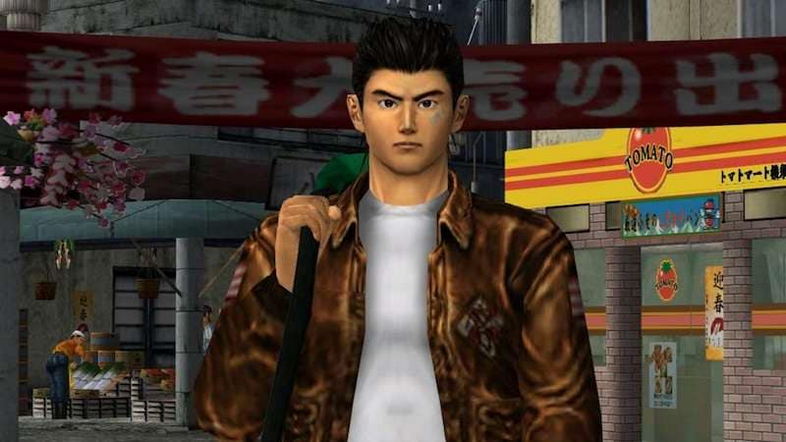
Last, but certainly not least, on our list of standout Sega Dreamcast games is Shenmue. This action-adventure game was a technical marvel back in the day, and it’s still revered by gamers for its immersive storytelling and revolutionary open-world gameplay.
Shenmue sets you in the shoes of Ryo Hazuki, a young martial artist on a quest to avenge his father’s death. The game takes place in a painstakingly detailed recreation of Yokosuka, Japan, in the 1980s. This living, breathing open-world was unlike anything gamers had seen before.
The game was all about exploration and interaction. You could talk to any character, enter almost every building, and even partake in various mini-games. One moment you could be involved in a thrilling chase sequence, and the next, you’re feeding a stray kitten or playing a game of darts at the local bar. The depth of interaction in Shenmue was groundbreaking at the time.
In terms of combat, Shenmue incorporated a complex fighting system borrowed from the Virtua Fighter series. It wasn’t just about button mashing; players had to learn and execute different martial arts moves to overcome their foes.
Shenmue was also one of the first games to feature a day-night cycle and weather system, further enhancing its realism. The game’s narrative unfolded in real-time, with certain events and interactions only available at specific times or under certain weather conditions.
In short, Shenmue was a game far ahead of its time. It laid the groundwork for future open-world games and left a lasting legacy in the gaming industry. Its innovative gameplay mechanics, captivating narrative, and detailed world-building make it a standout title from the Sega Dreamcast era.
Conclusion
The Sega Dreamcast was an innovative and groundbreaking console that brought us some of the most successful and critically acclaimed games of all time. Whether you’re a fan of fast-paced action games, deep RPGs, or engaging sports simulations, the Dreamcast had something to offer for everyone. Gamers worldwide continue to enjoy the console’s games, and its legacy lives on, despite its short lifespan. After all, if you’re looking to experience some of the best video games of all time, the Dreamcast is a console that you shouldn’t miss.
The Sega Dreamcast might be a relic of the past, but the impact of its games continues to be felt to this day. So why not dust off that old console, pop in one of these classics, and lose yourself in the captivating worlds they offer. Happy gaming!

